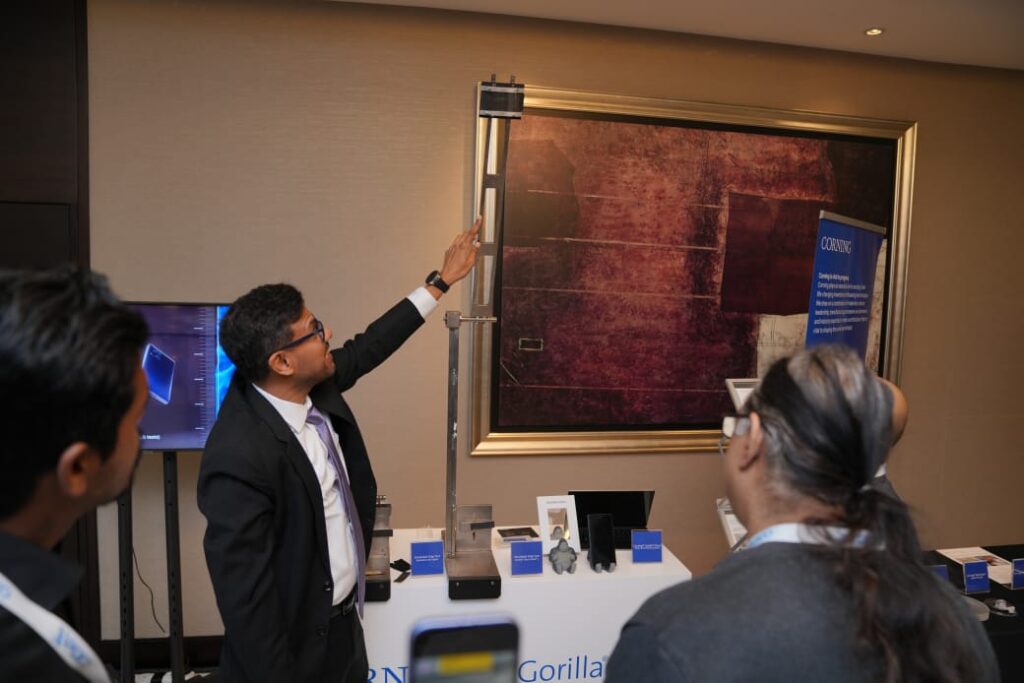Technology
OPSWAT Academy to Launch Onsite Trainings in 2024 Commencing in Dubai

OPSWAT announced today that it will be launching OPSWAT Academy Bootcamp, a three-day instructor-led training program starting in April 2024.
The OPSWAT Academy Bootcamp is an extension of OPSWAT Academy, an interactive and comprehensive cybersecurity training platform designed to educate and certify cybersecurity professionals responsible for safeguarding critical environments. With over 50,000 certified professionals to date, OPSWAT Academy has consistently set the standard for excellence in CIP cybersecurity training.
The inaugural in-person trainings will be conducted globally, commencing in Dubai, followed in Romania, the U.S., Singapore, U.K. and Australia. This strategic global approach aims to provide accessibility to cybersecurity professionals worldwide, fostering a collaborative learning environment and further solidifying OPSWAT’s commitment to enhancing CIP cybersecurity skills globally.
“The goal of OPSWAT Academy Bootcamp is to empower our customers and the cybersecurity community to unlock the full potential of OPSWAT products through immersive, lab-based training programs,” stated Irfan Shakeel, Vice President of Training and Certification Services at OPSWAT. “By expanding our offerings to include live, instructor-led training, we are taking a significant step towards equipping cybersecurity professionals with the practical skills and knowledge required to safeguard critical infrastructure effectively.”
OPSWAT Academy Bootcamp training will cover a comprehensive range of topics, including policy and product configurations, deployments and configurations, and customizations – ensuring participants gain a deep understanding of OPSWAT products and their applications in real-world scenarios. The curriculum is carefully designed to provide a hands-on experience, allowing attendees to enhance their expertise and stay ahead in the rapidly evolving cybersecurity landscape.
Upon successful completion of the training program, attendees will be awarded an OPSWAT Academy certification, a testament to their proficiency in CIP and OPSWAT products.
As the cybersecurity landscape continues to evolve, OPSWAT remains dedicated to providing cutting-edge training programs that empower professionals to safeguard critical infrastructure against emerging threats.
Tech News
Vertiv and Caterpillar announce Energy Optimization Collaboration to Expand End-to-End Power and Cooling Offerings for AI Data Centers

Vertiv, a global leader in critical digital infrastructure, and Caterpillar Inc. (NYSE: CAT), a global leader in power systems, today announced the signing of a strategic undertaking to collaborate on advanced energy optimization solutions for data centers. This initiative will integrate Vertiv’s power distribution and cooling portfolio with Caterpillar’s, and its subsidiary Solar Turbines’, product and expertise in power generation and CCHP (Combined Cooling, Heat and Power) to deliver pre-designed architectures that simplify deployment, accelerate time-to-power and optimize performance for data center operations.
A Powerful Collaboration:
This collaboration directly addresses the growing demand for on-site energy solutions that deliver reliable power and cooling. Together, the companies are able to offer a fully integrated solution with validated interfaces and performance, enabling customers to accelerate design, installation and deployment.
- Caterpillar and Solar Turbines will supply power generation solutions, such as natural gas turbines and reciprocating engines, to deliver dependable, scalable electric power and thermal energy for CCHP.
- Vertiv will provide a complete portfolio of power and cooling solutions and services, packaged as modular, pre-designed blocks, to shorten design cycles and standardize deployment.
The Customer Advantages:
- Accelerates Time-to-Power – by utilizing predesigned, modular reference architectures to speed up deployment time.
- Lowers PUE (Power Usage Effectiveness) – enables improved energy efficiency and carbon footprint because the system is optimized end-to-end: power, cooling, distribution and dynamic load management, compared to traditional design.
- Global lifecycle support – the offering is backed by the trusted, global service and support networks of both Vertiv and Caterpillar.
“This collaboration with Caterpillar and Solar Turbines is a cornerstone of our Bring Your Own Power & Cooling (BYOP&C) strategy and aligns seamlessly with our grid-to-chip framework by offering resilient, on-site power generation solutions. This is optimal for customers looking to reduce or eliminate grid dependence,” said Gio Albertazzi, CEO, at Vertiv. “By combining our complementary technologies, portfolios and expertise, we are enabling coordinated integration. Our pre-engineered, interoperability-tested building blocks let customers execute design, build and deploy concurrently, with predictable system performance.”
“As AI-driven workloads continue to accelerate, the demand for robust and scalable power infrastructure and cooling is becoming increasingly critical,” said Jason Kaiser, group president of Caterpillar Power & Energy. “Our collaboration with Vertiv will enable us to deliver integrated, on-site energy solutions that lower PUE and meet customers’ evolving needs.”
This initiative directly addresses the growing demand for on-site energy solutions and offers a coordinated, customer-first approach to solution design and implementation. The Vertiv and Caterpillar Memorandum of Understanding (MOU) represents a pivotal step in further refining this ecosystem, enabling customers to overcome energy constraints and deploy optimized AI centers.
Tech News
ASUS Presents “Design You Can Feel” at Dubai Design Week — A Multi-Sensory Journey Through Craftsmanship, AI, and the Future of Laptop Design

ASUS has opened the doors to its most immersive exhibition yet, Design You Can Feel, at Dubai Design Week 2025 — where emotion, functionality, and innovation collide to shape the future of personal technology. Featuring the exclusive Zenbook Ceraluminum™ Signature Edition and the world’s lightest Copilot+ PC, the Zenbook A14, the showcase invites visitors to experience how ASUS is transforming everyday devices into objects of desire — built to be felt, owned, and adored.
Held at Atrium Building 5 in Dubai Design District (d3), the interactive exhibit replaces the traditional tech display with a sensory journey — spotlighting not just what ASUS builds, but how it makes people feel. It is a rare chance for consumers to get up close, try the devices, and even purchase them at exclusive Design Week prices.
“Zenbook has always been about design that connects emotionally. With the Copilot+ PC lineup, we’ve reached a new era — one where your device responds to you, understands you, and becomes a seamless part of your creative and personal life,” said Coraline Lin, Marketing Director of, ASUS.
WHAT VISITORS EXPERIENCED INSIDE “DESIGN YOU CAN FEEL”
Zenbook Ceraluminum™ Signature Edition
The centerpiece of the exhibit, crafted from ASUS’s proprietary Ceraluminum™ — a material that blends the durability of ceramics with the weightlessness of aluminum. Available in four finishes inspired by nature, this ultra-premium collectible edition laptop was built to redefine what luxury tech feels like. The tactile experience is unforgettable — and so is the fact that visitors can purchase it on-site.
Visitors can also explore the AL-FORM Furniture Range — a collection of sculptural chairs that explore the materiality of Ceraluminum™. One chair in the collection is made entirely from Ceraluminum™ — and visitors are encouraged to touch, guess, and interact. It’s design that tells a story — and acts as the perfect lead-in to a purchase moment.
To complement the experience, a bespoke Ceraluminum™ Bukhoor burner adds a UAE-inspired sensory layer to the space — signaling ASUS’s deep respect for local culture while showcasing just how far the material can go.
INTERACTIVE HIGHLIGHTS
“Thincredible Table”
A hands-on disassembly experience where visitors can explore what makes ASUS laptops ultra-thin, ultra-durable, and ultra-desirable — from board design to external finishes. The more visitors understand what’s inside, the more they’ll want to own one.
SUSA by Future Facility
A conceptual piece redefining device interaction — made from oxidized Ceraluminum™ and powered by AI. It challenges everything we know — and want — from modern devices.
Tech-Art Installation by Dr. Ahmad AlAttar
A brainchild of Emirati roboticist and artist Dr. AlAttar, this immersive artwork transforms touch into sound — a symbolic bridge between human emotion and machine response. It embodies ASUS’s message: the future of tech is alive, reactive, and emotional.
EXCLUSIVE DESIGN WEEK OFFERS — AVAILABLE ON-SITE AND ONLINE
For the first time ever, ASUS is uniting a design exhibition with a purchase campaign. Visitors can shop exclusive deals of up to AED 2,000 off on select Zenbook and ProArt laptops — both in-person and through the ASUS eShop.
Featured devices include:
- Zenbook S16 (UM5606) – 16” Copilot+ powerhouse
- Zenbook DUO (UX8406CA) – Dual-screen innovation
- Zenbook A14 (UX3407) – The world’s lightest Copilot+ PC
- ProArt P16 (H7606) – Creator-grade performance
- ProArt PZ13 (HT5306) – Versatile 2-in-1 detachable
- ProArt PX13 (HN7306) – Convertible creator experience
Whether you’re a creative professional, a student, or a tech enthusiast — this is the moment to own the most advanced ASUS laptop at the best price of the year.
Visit ASUS at Atrium 5, d3 — feel the design, fall in love, and take it home.
Tech News
Corning presents vision to support UAE’s next-level growth through glass innovation

Corning is proud to present its innovations at the inaugural CORTechX technology symposium in the Middle East, held on November 12, 2025, in Dubai. This event showcases how Corning’s cutting-edge technologies are enabling faster data connections, advancing medical breakthroughs, and creating energy-smart spaces — emphasizing its renewed commitment to the region’s vision for AI, smart infrastructure, life sciences, and sustainability.
Corning in the UAE and Gulf Corporation Council
Corning has had a presence in the UAE for nearly 20 years, empowering in-building networks with optical fiber and cabling solutions.
For over 10 years, Corning’s life sciences products have supported research, diagnostics, and bioprocessing in the region.
Corning maintains a network of local partners, distributors, and integrators in the UAE and Saudi Arabia, fostering collaboration and innovation through training and certification programs.
“For decades, Corning has been quietly enabling progress across the UAE and Middle East – supporting networks, laboratories, and technologies that connect people and data. From AI-enabling technologies, advanced diagnostics, consumer electronics innovations, and energy-smart spaces, Corning’s technologies are empowering industries across telecommunications, life sciences, mobile consumer electronics, sustainability, and smart infrastructure.” – Gokhan Doran, International Vice President and General Manager, Corning International
“The Middle East and especially the UAE is at an inflection point. With its vision for AI, smart infrastructure, life sciences, and sustainability, this region now mirrors everything Corning stands for – Innovation, Quality, Performance, and creating long-term value. We are here today to not only introduce Corning, but also reemphasize our commitment to the region.” – Sudhir Pillai, Managing Director, Corning India, President, Corning India, Middle East, and Africa.
Corning Transforming the telecommunications industry for nearly 50 years.
As the inventor of the world’s first low-loss optical fiber in 1970, Corning revolutionized global connectivity. Today, Corning’s fibers are 100 times better than the original invention, offering unmatched performance.
Corning’s Vision for AI Data Centers – Enabling Generative AI Through Glass
Generative AI (Gen AI) is transforming industries, and at its core is Corning’s revolutionary glass technology, which plays a pivotal role in enabling AI. From optical fiber networks to semiconductor components, Corning’s glass innovations are driving AI forward. Corning holds over 1,000 approved and pending patents related to data centers, with 100 patents filed in the last year alone.
Inside Data Centers: Scaling Fiber Density
Gen AI requires greater fiber density to network GPUs (Graphical Processing Units) effectively.
Optical fiber, invented by Corning over 50 years ago, is critical for high-speed data transmission and allows for compact server environments that maximize processing power.
With 72-GPU nodes, fiber density needs have increased 16x compared to traditional cloud architectures.
Corning is already innovating to meet future GPU demands, ensuring space optimization with slimmer fibers and connectors.
Outside Data Centers: Driving more fiber connections between cities
To accommodate growing GPU cluster sizes with the massive computer power required for today’s Gen AI learning models, data centers are expanding into campuses with multiple data halls. And operators need to quickly build out high-density connections to get these data enters up and running. Corning is uniquely positioned to meet these needs.
Power and land constraints, as well as varying regulatory frameworks, are prompting data centers to spread out into regional hubs – creating a need for long-haul networks to connect them. We call this our Data Center Interconnect segment, or DCI. DCI cables have to maximize data flow between data centers, and that requires high fiber density, lower attenuation and fast installation.
Corning GlassWorks AI – Tailored Solutions for Gen AI Data Centers
Corning’s GlassWorks AI provides a comprehensive suite of products and services to enable agile, scalable, and high-density networks for the demands of generative AI. Leveraging optical innovation and industry collaboration, we offer solutions that unlock AI’s full potential:
Corning SMF-28 Contour Optical Fiber: 40% slimmer than conventional fibers, enabling compact designs.
Corning Contour Flow Cable: Doubles the density of traditional optical cables for faster deployment.
Corning MMC Connector: Boasts 36x the density of standard connectors.
Customized Connectivity Solutions: Tailored designs for unique network architectures, accelerating installation and reducing errors.
Corning’s Groundbreaking Technologies Across Industries
Life Sciences
Corning has been a trusted partner to the scientific community since 1915, with innovations like PYREX glass. Corning’s investments in bioprocess, cell therapy, 3D cell culture, and genomics research are helping scientists cure diseases and push the boundaries of discovery.
For the Middle East, Corning offers a comprehensive range of innovative, high-quality products and solutions for life science research and bioproduction through an extensive dealer network to serve the local customers.
Corning is advancing medical breakthroughs through technologies like Corning Valor® Glass, which protects drugs better than traditional glass packaging.
Trusted brands like Falcon, Axygen, and PYREX are found in over 100,000 laboratories worldwide.
Mobile Consumer Electronics
Corning Gorilla Glass has revolutionized smartphone durability since its debut in 2007, enabling damage-resistant, scratch-proof devices. Over 8 billion devices globally feature Gorilla Glass.

Innovations like Gorilla Glass DX/DX+ enhance mobile photography with improved light capture and reduced reflections.
In March 2025, Corning introducedCorning Gorilla Glass Ceramic, an innovative, transparent, and strengthenable glass ceramic material to help bring advanced toughness to more mobile devices. Gorilla Glass Ceramic significantly improves drop performance on rough surfaces compared to competitive aluminosilicate glasses.
Corning’s advanced optics are enabling immersive experiences in augmented reality and 3D sensing.
Corning Enlighten Glass is rewriting the rules for window technology
As a long-time innovator, Corning is always looking for synergies where our material science and process manufacturing expertise intersect with critical global macro trends such as high-performance buildings and sustainable construction. One of the latest areas where we are applying our glass science and manufacturing expertise is the architectural industry.
As one of the largest glass markets in the world, the architectural glass space is a natural fit for Corning, and we believe innovation in the windows industry is an important issue to work on. Nearly 25% of global energy production is used to heat and cool buildings* (Source: Global Status Report for Buildings and Construction 2019 )
While windows represent around 10% of the total surface area for buildings, they represent nearly half of a home or business’s heat loss**(Reference from Referenced by Stephen Selkowitz at the NGA Glass Conference, Jan 24-26, 2023)
Corning has been working on a suite of solutions to improve thermal performance within the fenestration industry.
Corning Enlighten Glass is an enabling technology for high-performance windows and doors that can significantly enhance the thermal performance, comfort, and aesthetics of built environments.
Enlighten Glass is a lightweight center pane that that can be integrated into high-performance window and door designs for insulated glazing units or in laminate applications.
Enlighten Glass’ benefits include increased energy efficiency and occupancy comfort with 2-3x thermal resistance; weight reduction by 20-50% in IGUs, making installation and operation easier; and a reduced carbon footprint by 20-40% compared to soda-lime glass alternatives
Enlighten Glass has an inherently lower Coefficient of Thermal Expansion (CTE) than soda-lime glass due to its boro-aluminosilicate composition, which means that Enlighten Glass has lower thermal stress under temperature gradients, so it does not need to be heat strengthened. Heat strengthening is necessary with soda lime glass to prevent its inherently higher risk of thermal field failure with its high CTE.
Enlighten Glass is formed through Corning’s proprietary fusion draw process which has become the industry’s most efficient method for producing pristine, thin, stable flat glass.

-

 Tech News1 year ago
Tech News1 year agoDenodo Bolsters Executive Team by Hiring Christophe Culine as its Chief Revenue Officer
-

 VAR7 months ago
VAR7 months agoMicrosoft Launches New Surface Copilot+ PCs for Business
-

 Tech Interviews2 years ago
Tech Interviews2 years agoNavigating the Cybersecurity Landscape in Hybrid Work Environments
-

 Tech News4 months ago
Tech News4 months agoNothing Launches flagship Nothing Phone (3) and Headphone (1) in theme with the Iconic Museum of the Future in Dubai
-

 Tech News2 years ago
Tech News2 years agoBrighton College Abu Dhabi and Brighton College Al Ain Donate 954 IT Devices in Support of ‘Donate Your Own Device’ Campaign
-

 Editorial12 months ago
Editorial12 months agoCelebrating UAE National Day: A Legacy of Leadership and Technological Innovation
-

 VAR1 year ago
VAR1 year agoSamsung Galaxy Z Fold6 vs Google Pixel 9 Pro Fold: Clash Of The Folding Phenoms
-

 Cover Story9 months ago
Cover Story9 months agoUnifonic Leading the Future of AI-Driven Customer Engagement













